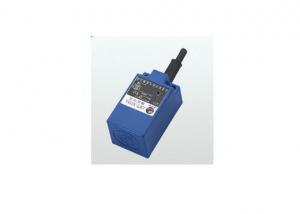Omron Solar Inverter
Omron Solar Inverter Related Searches
100w Solar Panel With Inverter Best Solar Panel Inverter 5000 Series Cast Aluminum Plate Portable Solar Panel Inverter First Solar Series 6 Module 12 Volt Solar Panel Inverter Plastic Solar Lanterns Buy Solar Panel Inverter Solar Panel Inverter Cost Solar Panel Without InverterHot Searches
Type Of Inverter For Solar Types Of Inverter For Solar Used Solar Inverter For Sale Inverter Size For Solar System Solar Edge Inverter For Sale 5kw Solar Inverter For Sale Solar Inverter For Sale Solar Inverter For Battery Solar Inverter For Split Ac Solar Inverter For Laptop Solar Inverter For Fridge Solar With Inverter Price Solar Inverter With 2 Battery Solar Inverter Price In China Best Solar Inverter In China Solar Inverter Price In Dubai Solar Inverter Price In Uae Solar Inverter Price In Kenya Solar Inverter Price In Kerala Solar Hot Water Collectors For SaleOmron Solar Inverter Supplier & Manufacturer from China
Okorder.com is a professional Omron Solar Inverter supplier & manufacturer, offers integrated one-stop services including real-time quoting and online cargo tracking. We are funded by CNBM Group, a Fortune 500 enterprise and the largest Omron Solar Inverter firm in China.Hot Products
FAQ
- A solar inverter plays a crucial role in the payback period of a solar system. It converts the direct current (DC) electricity generated by solar panels into alternating current (AC) electricity that is usable for homes or businesses. A high-quality solar inverter ensures maximum energy efficiency, allowing the solar system to generate and utilize more electricity effectively. By optimizing energy production, a solar inverter can significantly reduce the payback period of a solar system, allowing users to recoup their initial investment and start saving on electricity bills more quickly.
- The maximum power point current for a solar inverter can be calculated by using the maximum power point tracking (MPPT) algorithm. This algorithm constantly adjusts the operating conditions of the inverter to maximize the power output from the solar panels. It does this by varying the input voltage and current to find the point at which the power output is at its highest. This maximum power point current can be determined using mathematical calculations and algorithms employed by the solar inverter.
- The power factor affects the performance of a solar inverter by determining the efficiency and reliability of the system. A low power factor can result in increased losses and reduced overall efficiency, leading to higher energy consumption and reduced power output. In contrast, a high power factor improves system performance by minimizing losses and maximizing the utilization of available power, resulting in higher efficiency and better overall performance of the solar inverter.
- Yes, a solar inverter can be used with battery storage. In fact, integrating a solar inverter with battery storage systems allows for storing excess solar energy generated during the day and using it at night or during times of high energy demand. This combination enables greater energy independence and the ability to use renewable energy even when the sun is not shining.
- A solar inverter handles grid frequency deviations by continuously monitoring the frequency of the electrical grid. If the grid frequency deviates from the standard frequency, the inverter adjusts its output frequency accordingly to maintain synchronization with the grid. This ensures that the solar power generated by the inverter is in phase with the grid frequency, allowing seamless integration of the solar power into the grid system.
- The role of a voltage regulation feature in a solar inverter is to ensure that the output voltage remains stable and within a specified range, regardless of fluctuations in the input voltage from the solar panels. This feature helps to protect the connected appliances and devices from damage due to overvoltage or undervoltage, and also optimizes the efficiency and performance of the solar inverter system.
- Yes, a solar inverter can be used in areas with unstable power grids. Solar inverters are designed to convert the direct current (DC) produced by solar panels into alternating current (AC) that can be used to power homes or businesses. In areas with unstable power grids, the solar inverter can help stabilize the electricity supply by converting the solar energy into usable AC power, independent of the grid's stability. Additionally, some advanced solar inverters come with features like grid-tie functionality, battery storage, or grid support functions that further enhance their ability to adapt to unstable power grids.















































